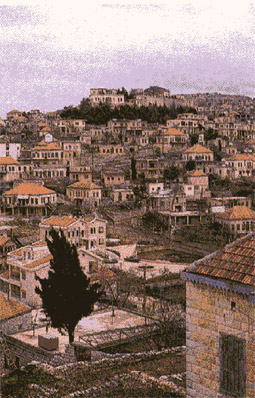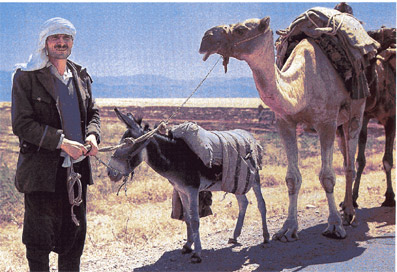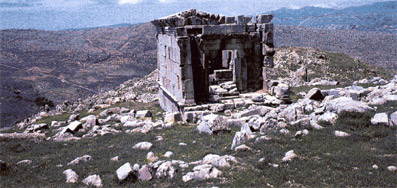Rachaiya al-Wadi
From Chtaura, proceed along the Damascus road to Masnaa (border post). Just before the post turn right, toward Rashaya. This is where Lebanon's early national leaders, including Bshara El-Khoury and Riad El-Solh, were held by French mandate authorities during the 1943 rebellion that triggered Lebanon's independence. Their prison was an eighteenth century citadel that can be visited today.
The Lebanese Army, which is now stationed at the castle, will assign a. guide to show you around the old vaulted chambers and the rooms where the Lebanese patriots were held.

(Extract from tourist brochure)
The town of Rashaya, in a remote corner of Lebanon, has been only lightly touched by the modern building boom affecting most of the country. On its cobbled main street small shops sell old fashioned oil stoves, reflecting the needs of this chilly mountain town where the giant Mount Hermon (snow-covered six months of the year) looms overhead. This town is also known for its locally made gold and silver jewellery.
On the way to Rashaya from Chtaura try to take the route through the hilltop town of Sultan Yaqub, where there are spectacular views of the valley below. Turn right at Marj and continue through Khiara toward' Sultan Yaqub. This town, visible for miles around in every direction, also makes a good landmark.

(Extract from tourist brochure - on local village)
Take the Rashaya road from Masnaa and continue four kilometers on to Aiha, parking near the pond at the centre of the village. Aiha is built on the foundations of numerous Roman temples and structures. In some cases Roman walls have been reused in present-day houses and once-visible temple foundations have disappeared into modern structures as basements. At one household, a stone relief carving of a robed figure sits in the yard. Alongside it is an ancient stone well and temple debris.
Numerous column drums, mouldings and dressed stones have been incorporated into the walls in the village's northwest section, and massive retaining walls of the Roman enclosure terrace can still be seen - now as part of modern houses.
Aiha's residents will gladly show you around their intriguing town,

(Extract from tourist brochure - on key local site)
From Chtaura drive in the direction of the border post with Syria, (Masnaa), but turn right toward Rashaya just before the post. Continue through the villages of Dahr El-Ahmar and Labia to Ain Harsha village whose high-walled terraces wind their way around the curves of the hillsides.
From here you have to walk. The rocky, exposed path (steep at first but levelling off) from the top of the village leads to the temple through a wild and beautiful landscape. On the walk, which takes about forty minutes, farmers and shepherds will greet you on your way and willingly give directions and colourful renditions of the history of the temple. The temple can also be reached by walking down from the higher village of Ain Ata.
One of the best preserved temples on Mount Hermon, Ain Harsha, is built of local limestone and blends in so well that it is virtually camouflaged among the rocky crags and boulders. A large stone (broken in two) in front of the temple, carries an inscription in Greek that dates it to 114-115 AD. The temple was restored in 1938-39 and the west wall-the side you see as you approach-is so perfect it is easily mistaken for modern. Around the temple are more remnants of ancient habitation, including sarcophagi.
Index Kharsag - Garden of Eden Subjects Index